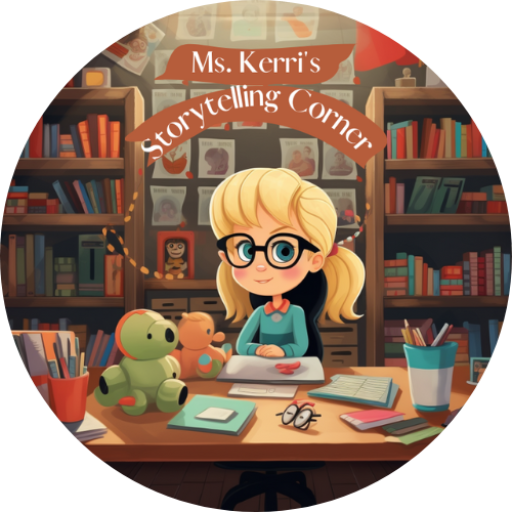Introduction
Reading aloud to children has immense educational benefits and helps prepare them for academic success. Regular read-alouds not only expose kids to new vocabulary words but also strengthen important skills like comprehension, oral language, and problem-solving. When parents make it a priority to read with their children each day, it fosters a lifelong love of learning.
This article will provide a comprehensive overview of how read-alouds can enhance language development, cognitive ability, and social-emotional growth. We’ll explore techniques for selecting age-appropriate books and tips for crafting engaging reading experiences. Finally, you’ll find strategies for incorporating read-alouds into your daily routine and measuring the impact over time.
The Importance of Read-alouds in a Child’s Education
Read-alouds lay the foundation for literacy by cultivating children’s pre-reading skills from an early age. Long before they can read independently, story time with parents or caregivers introduces kids to the basics of how print works. They learn that text conveys meaning and stories follow a sequence.
As children listen to books being read aloud, they absorb the building blocks for success. Their brains develop in ways that boost focus, memory, imagination and ability to process language. This early exposure gives kids a head start on vocabulary, grammar, and narrative structure when they enter school. Regular read-alouds also make the experience of reading fun and bonding for families.
%203.pdf%20(Billboard%20(Landscape)).png)
How Read-alouds Can Enhance Children’s Language and Cognitive Development
While enjoying stories together, children’s minds are highly engaged in listening and processing new information. Each time parents read aloud, kids learn countless new words that expand their vocabulary. By hearing an enriched variety of text each day, they start to grasp complex concepts more adeptly over time through repetition.
Discussion of the story helps children exercise important oral language skills. They ask questions, retell elements, and make connections based on what’s read to them. This back-and-forth conversation strengthens abilities to communicate effectively. Read-alouds also foster logical thinking as kids start to make inferences about characters’ actions or the sequence of events. Making predictions during reading introduces the building blocks of comprehension.
Benefits of Educational Read-Alouds
Language Development
Being read to daily provides a massive vocabulary boost. While listening to text above their own reading level, children soak up countless new words. This improved word knowledge enhances speaking and listening comprehension as they connect ideas. Kids learn how language works by hearing sentences modelled for them throughout stories.
Cognitive Development
Interacting with books stimulates the development of higher-level thinking skills. Through read-alouds, children are exposed to complex ideas and learn to think more critically by asking questions, problem-solving, and making inferences. Their memory and focus improve as they visualize story elements and bonding with caregivers during this quality time helps build brain architecture.
Social and Emotional Growth
Sharing books together is a hugely influential way to promote empathy, kindness, and understanding of others. Read-alouds cultivate emotional literacy and can spur discussions about character feelings and challenges. The bonding experience leaves children feeling secure, cared for and excited about reading—all factors that fuel success.
Selecting the Right Books
.pdf%20(Billboard%20(Landscape)).png)
Age-Appropriate Choices
When starting read-alouds, choose books with predictable stories, colourful illustrations and rhyming text designed for babies and toddlers. Progress to books with short sentences for preschoolers. For grade schoolers, consider chapter books but be selective based on their interests and attention span.
Diversity and Inclusion
Incorporate a variety of books portraying people of different races, physical abilities, cultures, family structures etc. This exposure at a young age helps kids accept others and celebrate diversity in their community. Seeking out books from various perspectives also enriches their learning.
Interests and Passions
Scan your child’s interests and choose books tied to themes they find exciting like animals, sports, cooking or vehicles. Introduce new topics that intrigue them but don’t pressure them if they aren’t ready. Build up a collection across many genres to discover mutual favourites.
Learn the benefits of teaching your child to love reading HERE.
The Art of Effective Read-Alouds
Reading Techniques
Enliven the story with expression and animation in your voice. Convey character emotions dramatically to bolster engagement. Periodically pause to invite predictions or check comprehension with open-ended questions. Making read-alouds dialogic keeps kids invested.
Encouraging Critical Thinking
Prompt children to think more deeply by asking how or why questions in addition to what. Encourage inferences about storyline or character feelings. Relate plot points to their own experiences to foster an applied understanding of themes. Praising their ideas reinforces critical skills.
Integrating Read-Alouds into Daily Routine

Establishing a Reading Schedule
Designate intentional undistracted reading time, ideally when kids are most receptive like before nap/bed. Consistency is key, aim for short 10-15 minute sessions daily to build the habit. Involve older kids by letting them choose books or taking turns reading pages.
Utilizing Technology
Audiobooks are ideal for car rides while dual-screening on the couch lets parents point out pictures. Just be selective and remember that for under-twos, nothing replaces personal interactions. Schedule virtual reading dates with faraway loved ones via video call.
Measuring Success
Over weeks/months, observe changes in how much your child seems to understand when speaking about stories. Track vocabulary uptake and developmental growth. Celebrating progress together keeps reading fun and motivates kids’ literacy progress.
FAQs
Q1. What age is suitable for read-alouds?
Most experts agree daily read-alouds are beneficial from infancy onward and continuing into the school-aged years. Adapt books, length and focus based on your child’s stage of development and attention span. Kiddos can’t get enough read-alouds!
Q2. How can I make read-alouds engaging?
Incorporate fun by using props, changing your voice for characters, acting out parts or allowing little ones to turn pages. Pause to discuss thoughts and connect content to their lives. Keep it lively and don’t be afraid to giggle together over pictures.
Q3. What if my child doesn’t seem interested?
Some kids simply aren’t ready at first but giving space without pressure often does the trick. Try library storytimes to spark joy through music and movement. Record yourself reading then they can enjoy it independently. Most of all, keep it light and don’t force – finding the right books is key.
Conclusion
Making story time a daily dedication lays the best foundation for future learning by strengthening language and cognitive functioning. Select diverse, enriching texts and craft interactive read-aloud experiences to cultivate the pleasures of the reading life early on. Building these positive literacy habits as a family creates academic and emotional benefits that last for years.
Additional Resources
Recommended Children’s Books:
“Where the Wild Things Are” by Maurice Sendak: This beloved classic takes young readers on an imaginative adventure with Max, a young boy who sails to the land of the Wild Things. It’s a story that celebrates the power of imagination and the comfort of returning home.
“The Very Hungry Caterpillar” by Eric Carle: Join the journey of a hungry little caterpillar as it transforms into a beautiful butterfly. This delightful book not only teaches counting and days of the week but also the wonders of nature and transformation.
Educational Websites and Platforms:
Ms. Kerri’s Story-telling Corner: Ms. Kerri’s Corner is a treasure trove of educational resources, especially focused on early childhood education. You’ll find creative activities, book recommendations, and valuable insights into promoting children’s literacy.
PBS Kids: PBS Kids offers a wide range of educational games, videos, and activities that align with their popular TV shows. It’s a trusted resource for quality content that entertains and educates.
Reading Tips for Parents
- Create a Cozy Reading Nook: Design a dedicated space for reading with comfortable seating, good lighting, and a variety of books. Make it an inviting space where you and your child can share stories.
- Be Animated: Don’t be shy about using expressive and engaging voices for characters. It brings the story to life and makes it more engaging for your child.
- Ask Open-Ended Questions: Encourage critical thinking by asking questions that require more than a simple yes or no answer. For example, “Why do you think the character made that choice?”
- Encourage Predictions: Pause during the story to ask your child what they think might happen next. This promotes engagement and anticipation.
- Discuss Real-Life Connections: After reading, discuss how the story relates to your child’s own life or experiences. It helps them make meaningful connections and deepens their understanding.

With these additional resources and reading tips, you’ll be well-equipped to continue the enriching and educational journey of read-alouds with your child. Happy reading!

Ms. Kerri’s Corner provides a exciting virtual space for preschool learning. Through a variety of engaging activities, she exposes young minds to early math, literacy, science and social-emotional skills in a developmentally appropriate way. Centers for blocks, art, books and music allow children to explore hands-on learning at their own pace. Guided lessons subtly introduce number sense, letter sounds and narrative thinking. Careful observation gives insight into each child’s progress across domains. Viewers are also invited to participate, reinforcing that their ideas are valued. By making learning fun yet purposeful, Ms. Kerri lays the groundwork for future academic success while fostering creativity and imagination. Her program offers preschoolers valuable screen-based learning experiences.




